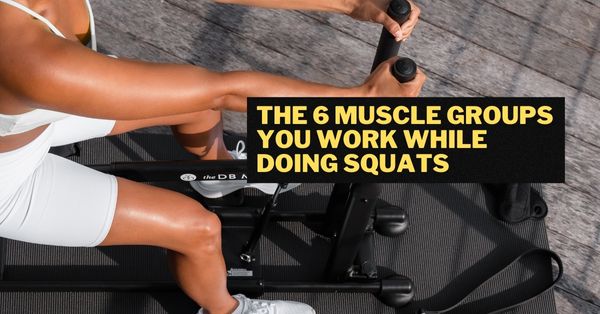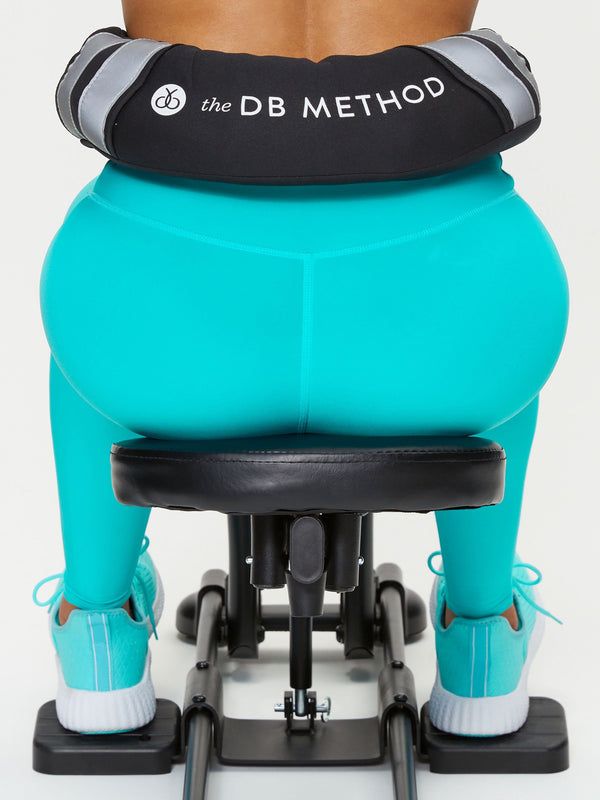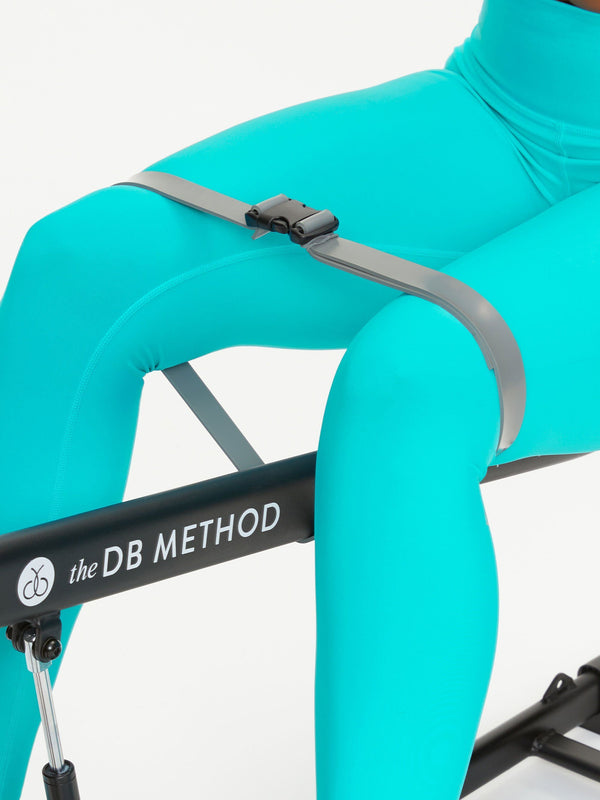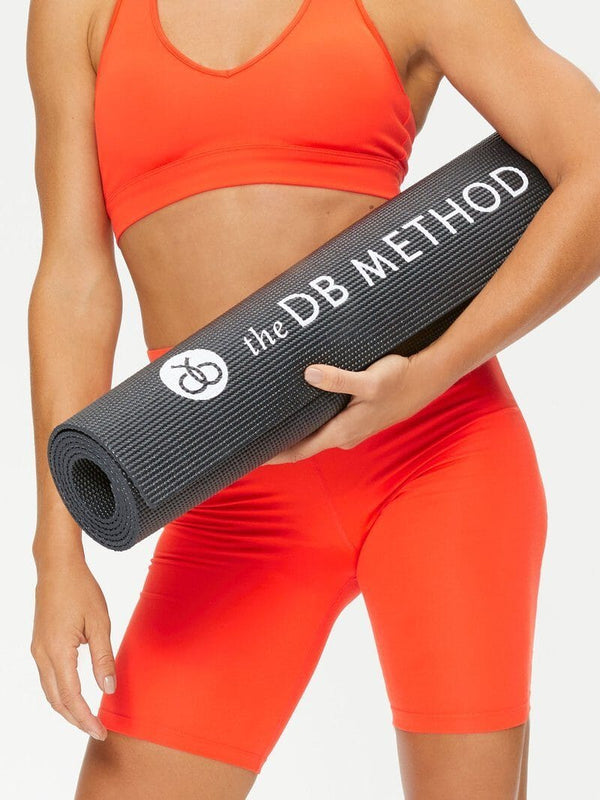There are 6 muscle groups that squats work that help to improve your athletic performance, tone and sculpt your booty, and build strength in your legs and core.
The six muscles and muscle groups that squats work are:
- Quads (front of your thigh)
- Glutes (butt)
- Hamstrings (back of your thigh)
- Adductors (inner thighs)
- Calves
- Core
Squats are used by bodybuilders, weightlifters, athletes, and other fitness enthusiasts because they can be modified to target whatever muscle group the person wants to work. And the muscles squats work aren't just used for fitness, toning, and building muscle.
You use the same muscle groups when getting into your car, sitting down on your couch, and while seated when you need to use the restroom. And it doesn't matter if you're using a squat machine or going free form. Each time you drop and rise in a daily activity, you activate these six muscle groups. Let’s look at each group or muscle individually.
Quads
Your quads are a group of four muscles on the front of your thigh, and this muscle group consists of:
- Rectus femoris (the very front of your thigh)
- Vastus lateralis (the outer portion of the front of your thigh)
- Vastus medialis (the "teardrop" muscle on the lower inner part of your thigh)
- Vastus intermedius (the deeper muscle that runs underneath your rectus femoris and vastus medialis)
This is the muscle group that does most of the work in a squat. As you're coming up out of the squat position, these quad muscles straighten your legs at your knees, and then you stand up.
Quads help you to develop stronger, more toned muscles in your lower body.
Glutes
Glutes are made up of three muscles:
- Gluteus maximus (your bum)
- Gluteus medius (the side of your cheeks)
- Gluteus minimus (the muscle underneath your gluteus medius)
Your gluteus maximus is what extends your hips and legs as you come up from a squat. This causes you to stand up. As your squat depth increases, your gluteus maximus gets worked even more.
The gluteus medius works as a stabilizer. This muscle is what prevents your knees from caving in towards one another. It also stabilizes your pelvis and hips when you run or walk.
Hamstrings
Hamstrings are a collection of muscles that run down the back of your upper thighs, including:
- Biceps femoris (moves hips and knee joints)
- Semitendinosus (superficial muscle in the back of the thigh)
- Semimembranosus (extends the hip joint and flexes the knee joint)
Since your hamstrings cross both your hips and knees, they help with both joints.
As you lower yourself into a squat, your hamstrings assist your glutes by controlling the bend at your hips and the speed of the movement. When you rise back up, your hamstrings contract and counteract your quads to stabilize and protect your knees.
Squatting on one leg provides even greater activation of the semitendinosus muscle than traditional squats.
Adductors
Your adductors are the muscles that run along the inner section of your thigh. The adductor magnus assists your quads before your glutes kick in to extend your hips.
The adductor group is made up of five muscles:
- Adductor Brevis (brings your thighs towards you)
- Adductor Longus (brings your thighs towards you at the hip)
- Adductor Magnus (largest of the five muscles)
- Pectineus (the most front adductor)
- Gracilis (crosses the hip and knee joints)
Whether you are walking, sprinting, or squatting, your adductors play a fundamental role. Some types of squats use your adductors more than others, like a sumo squat. The wider your stance, the more of them you will use.
Calves
Your calf muscles are located on the back side of your shins. These muscles perform a crucial supportive role with everyday activities, counterbalancing your quads and knees.
The calf muscle group is composed of two muscles:
- The gastrocnemius (used when sprinting and jumping)
- The soleus (used when jogging and walking)
The gastrocnemius balances your lower body. It determines how you squat and how much weight you can squat. Depending on how tight this muscle is, your ankle and knee mobility are also affected.
Your calf muscles kick in during the bottom portion of a squat by providing a major push (literally) to send you back into a standing position.
Calf muscles are essential in almost all leg movements including walking and running.
Core Muscles
Your core muscles–especially your abs–are responsible for stabilizing your body and helping you maintain balance. A strong core enables you to have a full range of motion while doing a squat and keeps your upper body standing and stable during the movement.
The major muscles of your core include:
- Transverse abdominis (deepest layer of abdominal muscle)
- Multifidus (helps your back to bend)
- Obliques (helps you to bend from side to side)
- Erector spinae (straightens your back)
- Diaphragm (used for respiration)
- Pelvic floor muscles (located between the tailbone and the pubic bone within the pelvis)
- Rectus abdominis (abs)
Your transverse abdominis, obliques, and spinal erectors stabilize your spine and keep your upper body from leaning forward when you squat (and keep you from falling over). The rectus abdominis keeps your upper body stable, so you can increase the weight you are lifting.
When you engage your erector spinae during a squat, this muscle keeps your back in a straight line.
Squats do more than just tone your tush and strengthen your legs. They work six muscles groups, and by adding kettlebells, resistance bands, and changing your stance, you can modify the squats to work even more muscles or intensify the impact of each drop and rise.








